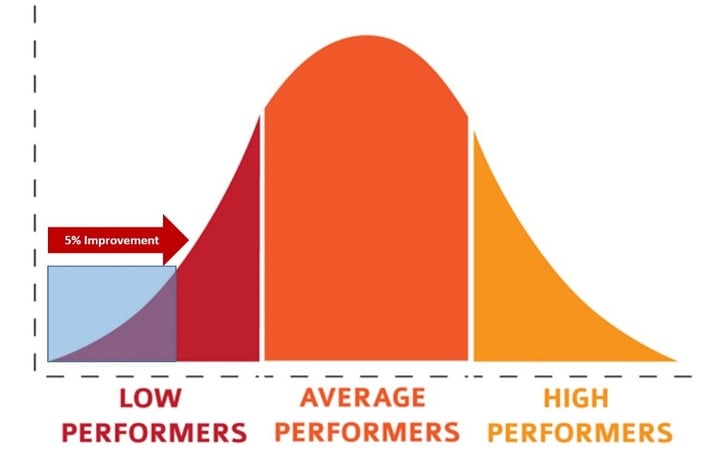Earlier this week, I wrote about why organizations should invest in developing talent who has fear.  The premise of that blog is to present options for investing in talent development by segmenting potential participants between those who are identified as “high potentials” and employees who embrace their fears to motivate their learning journey and performance improvement.
The premise of that blog is to present options for investing in talent development by segmenting potential participants between those who are identified as “high potentials” and employees who embrace their fears to motivate their learning journey and performance improvement.
One of our readers, an executive with a Fortune 500 firm, sent me a nice note thanking me for the insights and suggested a related follow-up topic. He shared that one of the biggest issues facing his organization isn’t the lack of high potential training or focusing on special audiences such employees who have a fear of failing; his issue is the fact that his company is as strong as its weakest contributors. I was surprised to learn during our conversation that he never suggested terminating the weak employees as an option, but rather he was intensely focused on looking for creative and cost effective methods of providing better and scalable foundational skills that can help weaker performers get better.
It was a refreshing and positive conversation that got us thinking and brainstorming about ways of improving the weakest human capital assets.
The graphic below illustrates this senior line manager’s vision of shifting the performance curve by moving low performers 5% to the right. This conservative and thoughtful leader hypothesized that a 5% improvement in performance in his organization could result in a .05% improvement in bottom line profitability which translates into hundreds of millions of dollars.

The next step part of our conversation was centered on determining how to make this hypothesis a reality. We discussed many of the challenges he faced short- and long-term and what competency areas would provide the biggest and most immediate business impact.
The three most important competencies to develop quickly, efficiently, and with scale included Coaching, Business Acumen, and Strategic Business Selling.
Coaching
The senior leader shared there are about 2,200 front-line managers in his organization managing a range of people from zero (virtual teams without direct employees) to managers leading teams of 20+ direct reports. He shared that they don’t have the fundamentals of coaching and worse yet, the weakest leaders who have poor coaching skills are really hurting the business. I shared a simple coaching framework that we have been using to teach fundamental coaching skills called BEST. BEST stands for:
- Behaviors – What were the observable behaviors?
- Effects – what were the effects of the behavior?
- Solutions – What are the solutions to fix the behaviors?
- Teach – Focus on teaching inexperienced managers the best practices of leadership
Business Acumen
The senior leader shared that the next most important competency was Business Acumen. He feels that having a foundation of business acumen skills to understand results, execute strategy, and measure performance from a financial perspective is critical to the short- and long-term future of the company. In addition, having good business acumen skills helps leaders create alignment and coach their teams to higher levels of performance.
Strategic Business Selling
The next important competency that can be developed to improve overall business performance is Strategic Business Selling. In today’s complex business world, sales professionals must sell from a business perspective and not just a sales perspective in order to be effective. C-Suite and D-Suite decision makers want to work with business people who understand their customer’s business and add value in the selling process. A slight improvement in the weakest performing sales people can have a significant impact on results.
The nice thing about each of these three competencies is that they can be developed quickly, efficiently and with scale. Business Simulations with embedded content can provide participants with a learn-by-doing approach and helps them to immediately apply their new skills back to the real work. A typical investment is about $400 per competency and the documented return can be over 500% in business impact
In summary, I agree that focusing on the weakest performers and providing them with the skills needed to improve their performance can be the most significant investment in training an organization can make.




